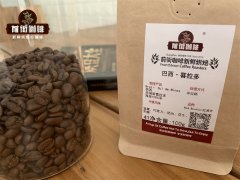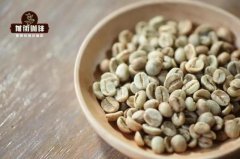Boutique coffee beans Bolivia coffee is a dark horse?
Some time ago, the front street coffee on the shelves of a coffee from glass via, called Bolivian cocoa sun Kaddura. Bolivia has high altitude and diversified topography, creating high-quality and sour boutique coffee Bolivia is a dark horse producing area of boutique coffee in recent years, located in various estates with high-altitude and complex terrain in South America, with different characteristics.
Today, Qianjie Coffee is going to introduce the special treatment of coffee beans in three estates and Bolivia.
Bolivian Coffee Bolivia Coffee
Towering peaks, dreamy salt lakes, grasslands rich in wildlife resources. The superior natural environment and resources make it the cradle of coffee. Bolivia may produce negligible coffee in the coffee-producing countries of South America, but this beautiful country brings boutique coffee as charming as its scenery, so locals proudly call Bolivian coffee "the taste of heaven".
Unlike other coffee producing areas, Bolivian coffee can be grown only after hours of driving down from a 3600-meter city to areas below 2000 meters above sea level. Among them, North Yonggas Highway (North Yungas Road) is recognized as the first dangerous road in the world. The mountain road is basically close to the edge of the cliff, and there is no guardrail, there are foggy days, often overturning, so it is also known as the "death road".

Alpaca Manor
The manor is named after the cute animal alpaca in Bolivia. Although the area of the manor is small, it is famous all over the world. With all the natural resources suitable for coffee growth, such as high altitude, fertile soil and lush forests, the manor owner hopes to use this manor to show local farmers modern planting techniques and ideas. and let them know that new coffee trees can coexist with old ones.

Alpaca Manor is an old estate that has been in operation for 15 years before it met Pedro, which is trying to promote Bolivian coffee beans on the international stage. But they also receive tutoring from Pedro, gradually growing different coffee beans separately and in a better way to produce high-quality boutique coffee beans.
Alpaca Manor has a wide variety of coffee beans, including bourbon, kabuki Java, SL28/SL34, Kaddura and so on.
FLORIPONDIO Mumandra Coffee Manor
The Mumandra Manor and the Castle Heritage Manor are located in the same area, the Samayi Pata area, which is high in altitude but not easy to grow coffee, but they have found suitable microclimate and excellent soil blocks in the area. So Mumandra Manor has become an experimental manor of boutique coffee! The estate grows more than 50 boutique coffee varieties, including Red Kaddura, SL28/SL34, Batian, Pacamara, Java and so on.
It is worth mentioning that there are really a lot of wooden mandala in the manor. It is a neurotoxic plant. In traditional culture, witches will eat its soup to communicate with the gods. The Mudra Manor often reminds visitors not to touch and smell the Mudra.
Eagle Coffee Manor in GAVILAN Province
Martin, the owner of the provincial eagle manor, grew up in the coffee town of Caranavi, Bolivia, where local coffee farmers have stopped growing coffee because of a decade-long market recession. Martin also gave up, and then decided to start over together after meeting Pedro, taking Bolivian coffee beans to a new level, so he set up the Provincial Eagle Manor.
Shengying Manor is a young manor with excellent strength. I believe there will be a chance to drink their coffee in Taiwan in the near future!
Bolivia's unique method of handling coffee beans
We all know that the treatment of coffee beans has a lot to do with the local climate, especially the number of days of sunshine and the difficulty of obtaining water, as well as the degree of development of local treatment plants.
As the coffee producing areas in Bolivia are relatively cloudy and sunny, the sun schedule must be very fast to avoid rain. They developed a method called cocoa solarization, which turns every half an hour during the sun and is sent to the dryer for secondary drying before it is fully dry for three days to reduce the water content to 12.5. The fermentation process, which is flipped every 30 minutes, creates a clean and bright process that is difficult to achieve in the general sun.
In the process of washing, Pedro found that some Bolivian coffee beans are suitable for the traditional way of removing pectin with water and fermentation bacteria, while others are suitable for fermentation without water, developing 16 hours of low temperature anhydrous fermentation water washing, very special! The original water fermentation water washing treatment law will be fermented in water for 18 hours.
No matter with or without water fermentation, we pay great attention to every detail and strictly monitor the moisture content, Brix sugar content, pH value and so on, all in order to produce world-class coffee!
Important Notice :
前街咖啡 FrontStreet Coffee has moved to new addredd:
FrontStreet Coffee Address: 315,Donghua East Road,GuangZhou
Tel:020 38364473
- Prev

Coffee variety Daquan bourbon coffee belongs to the tin card variety?
Bourbon coffee is a variety of Tibica coffee, they are all ancient varieties, developed from Arabica, the general bourbon coffee is mainly from green fruit to ripe bright red fruit, that is, we have heard of "red bourbon", the fruit is relatively short.
- Next

Coffee varieties Arabica Coffee varieties Abstract what are the main varieties of fine coffee
Coffee can be divided into three main varieties, namely, Arabica (Coffea arabica), Robusta Coffea canephora (Robusta) and Liberia (Coffea liberica). Arabica is the main force of boutique coffee, suitable for growing at higher elevations, tastes better, is more delicate, needs care, and is the smallest of the three, so it is also known as
Related
- Beginners will see the "Coffee pull flower" guide!
- What is the difference between ice blog purified milk and ordinary milk coffee?
- Why is the Philippines the largest producer of crops in Liberia?
- For coffee extraction, should the fine powder be retained?
- How does extracted espresso fill pressed powder? How much strength does it take to press the powder?
- How to make jasmine cold extract coffee? Is the jasmine + latte good?
- Will this little toy really make the coffee taste better? How does Lily Drip affect coffee extraction?
- Will the action of slapping the filter cup also affect coffee extraction?
- What's the difference between powder-to-water ratio and powder-to-liquid ratio?
- What is the Ethiopian local species? What does it have to do with Heirloom native species?

